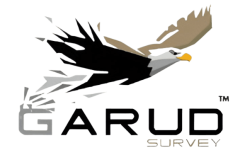Aerial Intelligence For Powerline
Powerline Monitoring
Garud Survey plays a key role in enhancing risk management in electricity distribution through automated inspections. Our drones achieve a noteworthy 30-50% reduction in both time and expenses, signifying substantial cost savings. In power line inspections, they provide a comprehensive perspective, covering extensive ground and scrutinizing critical components. This empowers power companies to concentrate on fault detection, meticulous maintenance planning, and strategic monitoring.
Garud Survey’s unwavering commitment ensures rapid, accurate data gathering for risk reduction in electricity line inspections and civil infrastructure.
Derived benefits include swift situational overviews, meticulous fault detection, high-quality media delivery, preventive maintenance planning, and optimized production.
Our technology facilitates access to hard-to-reach areas, minimizing downtime and enhancing employee safety, marking a transformative solution in electricity distribution management.
Highlights
- Encroachment Analysis using cutting edge photogrammetry software
- Annotated & Geo-Tagged Fault Images Report
- Visual Data Analysis powered by AI
- Thermal Imagery for rapid fault analysis
- Higher speed and accuracy than conventional inspection methods
- Streamline workflows in significantly less time
- Relatively less time & lower costs
use of drone in Powerline Monitoring
Drones have several important uses in Powerline Monitoring, significantly enhancing the way power companies inspect, maintain, and manage their electricity distribution infrastructure. Here are some key usages of drones in Powerline Monitoring:
- Inspections
- Thermal Imaging
- Safety and Accessibility
- Monitoring and Surveillance
- Stringing Powerlines
- Vegetation Management
- Infrastructure Planning
- Disaster Response
FAQs?
Powerline monitoring involves the use of specialized technology, such as drones or sensors, to inspect and monitor power lines for potential issues, ensuring their safety, efficiency, and reliability.
Various technologies are employed, including drones equipped with cameras or LiDAR, sensors for temperature and vibration monitoring, and software for data analysis to detect anomalies.
While initial setup costs might be involved, continuous monitoring helps prevent costly damages or outages. It’s generally considered cost-effective in the long run by reducing maintenance costs and improving system reliability.
Regulations and standards differ across regions but generally emphasize regular inspections and maintenance to ensure the safety and reliability of power transmission systems.
Yes, compliance with aviation and local regulations is crucial. Certified operators, flight permissions, and adherence to safety guidelines are essential for legal and safe operations.
